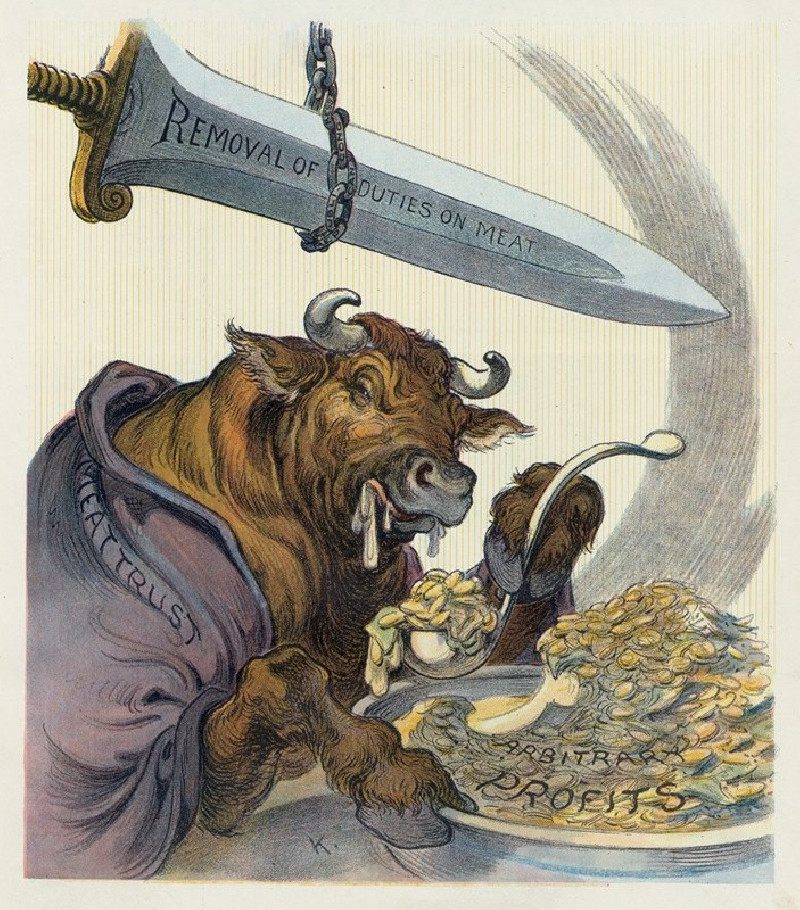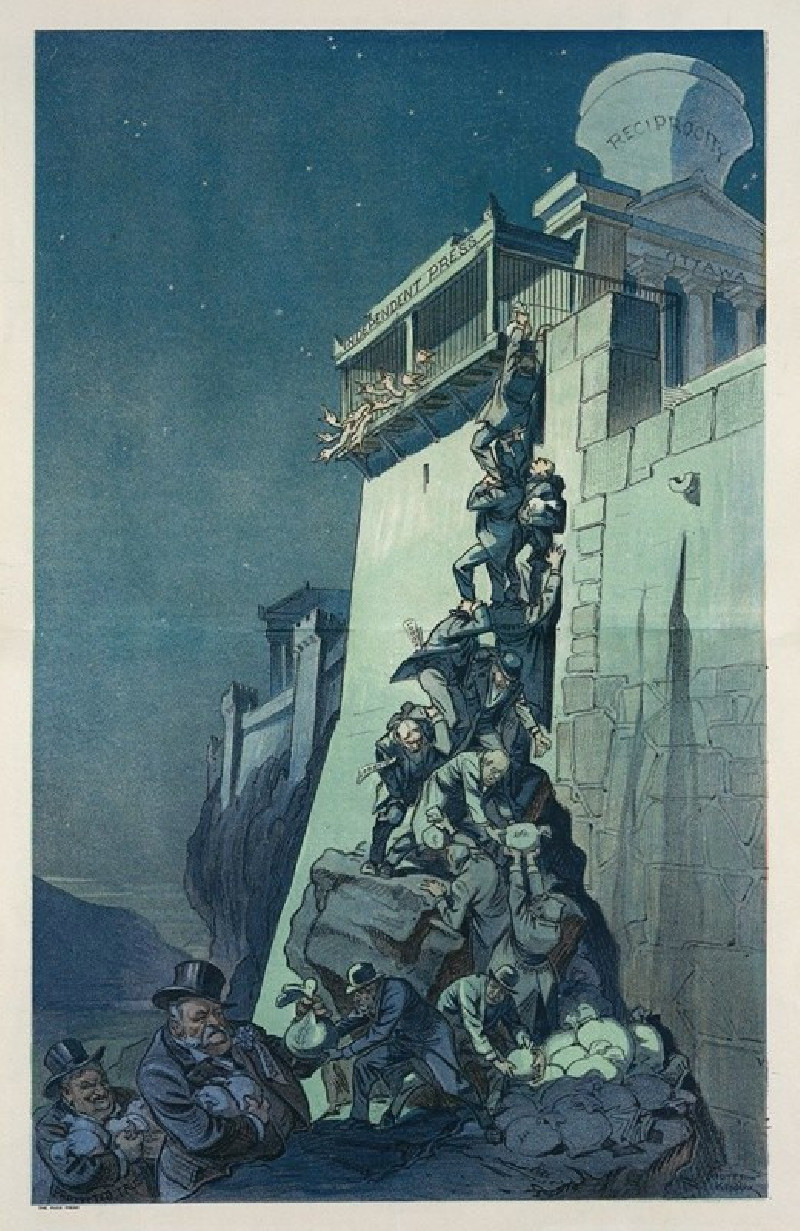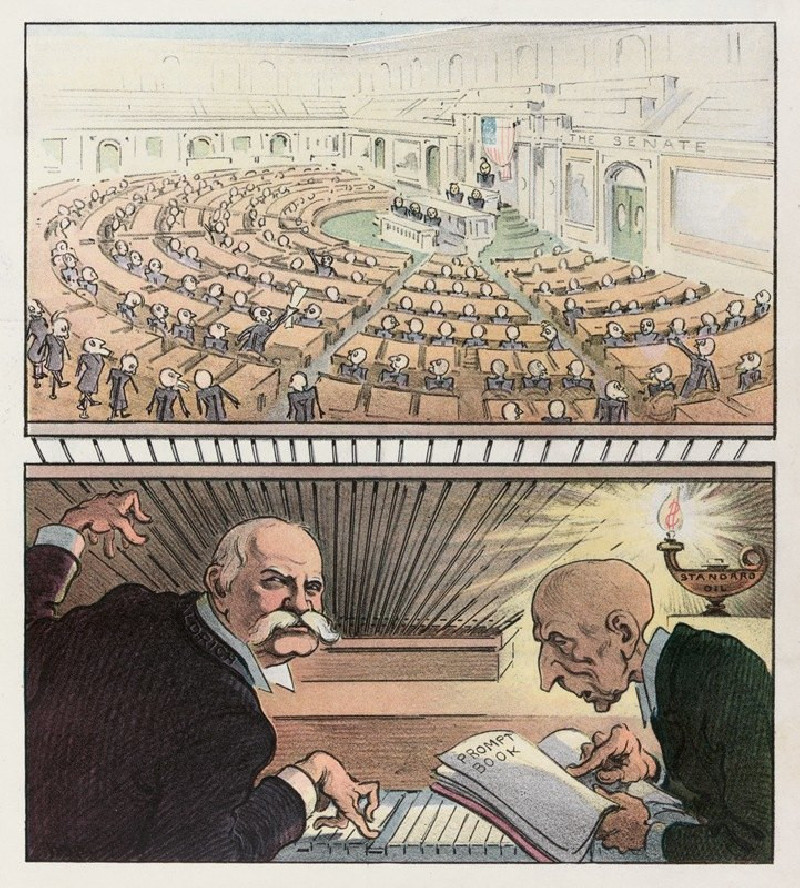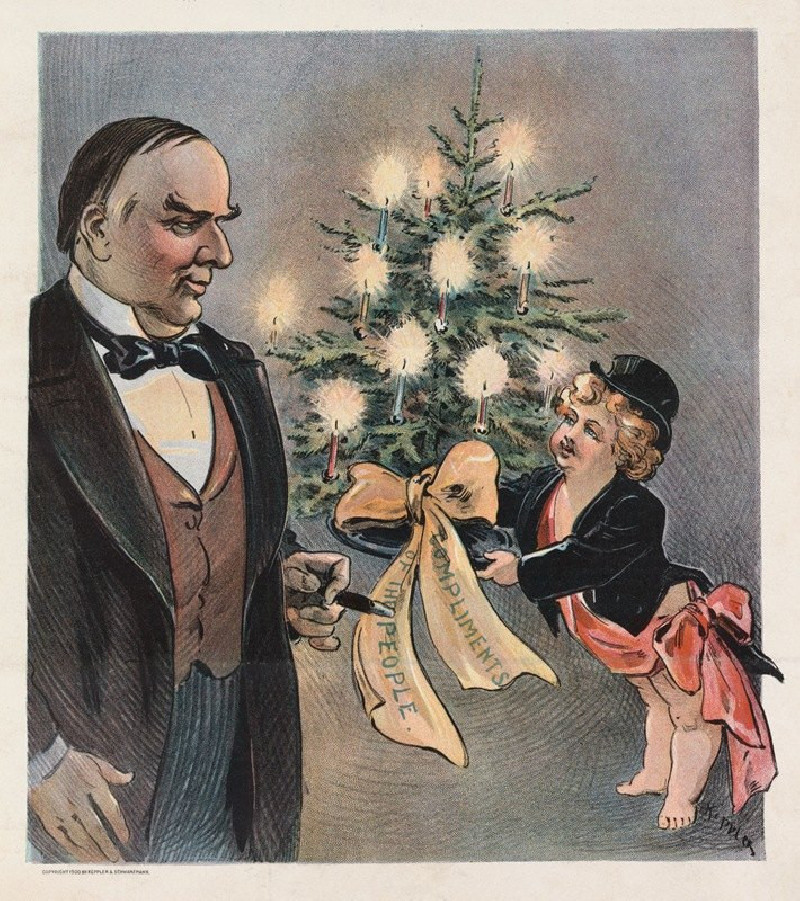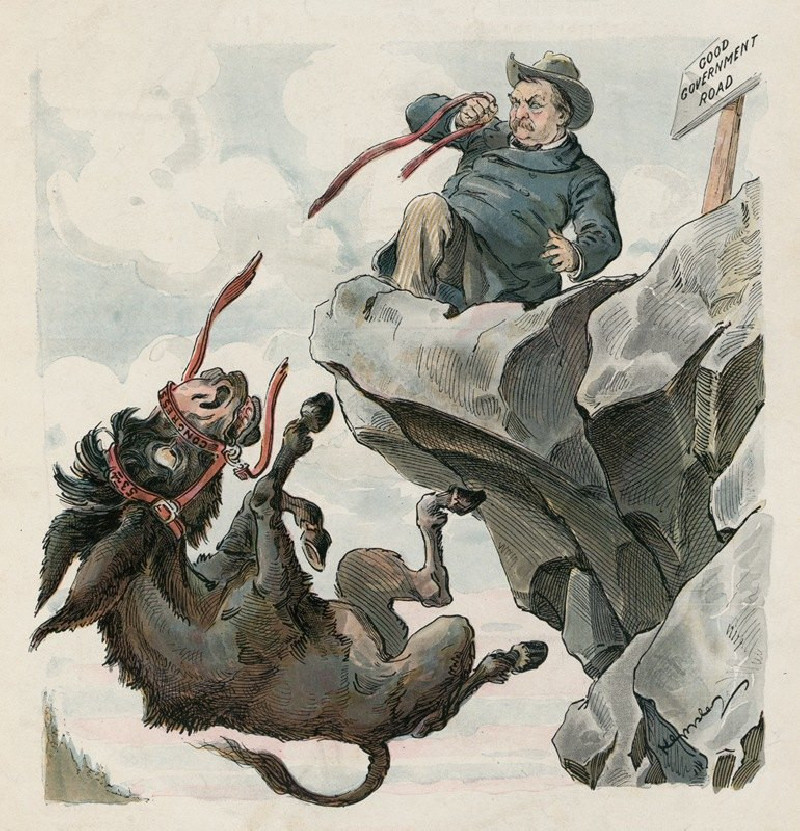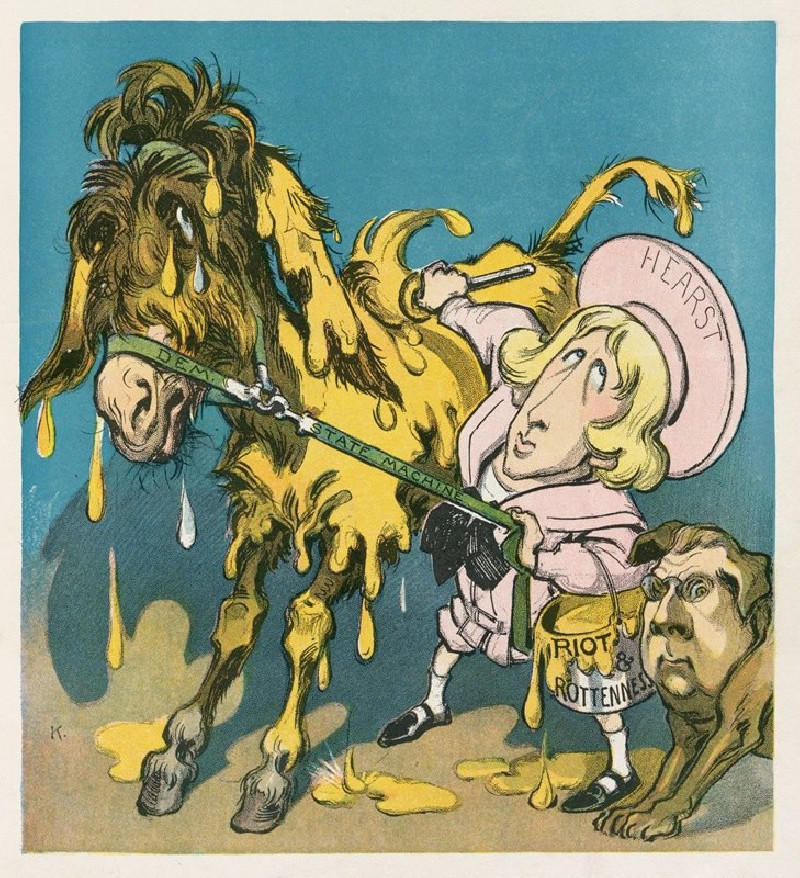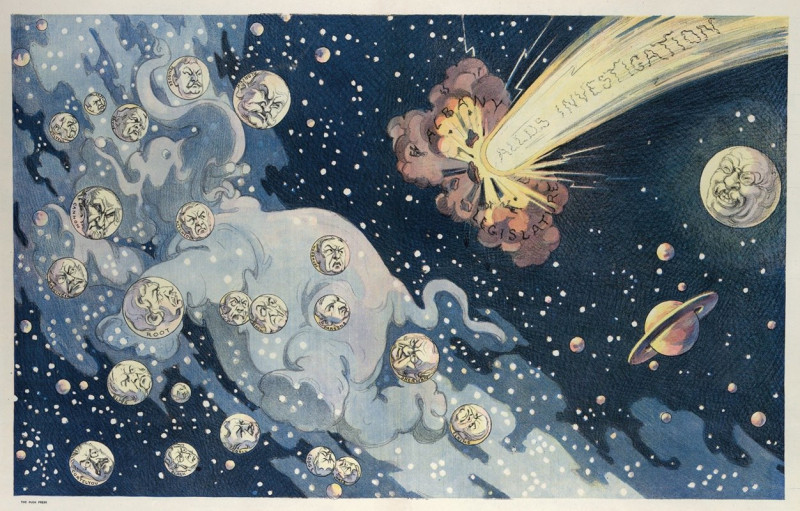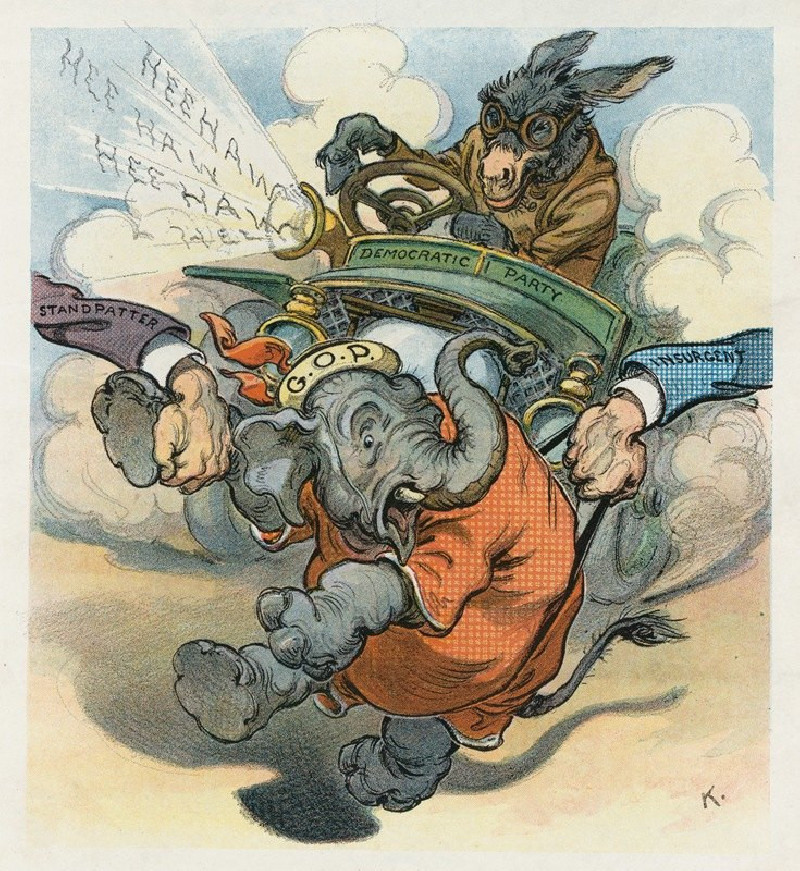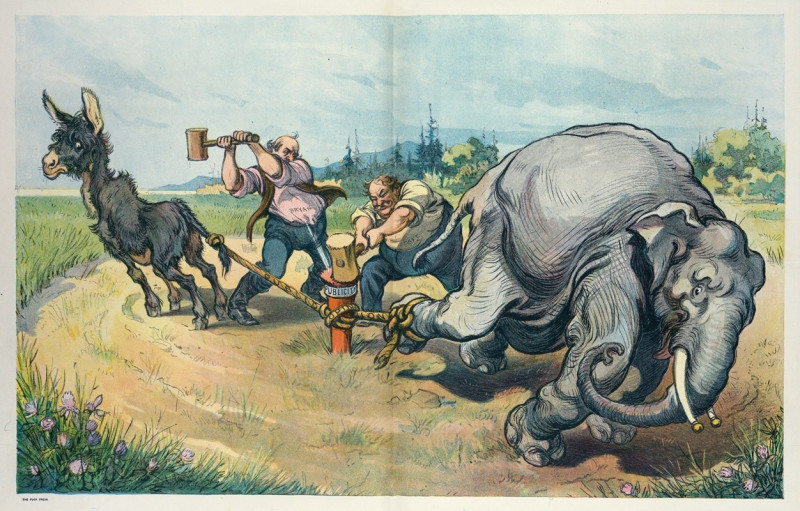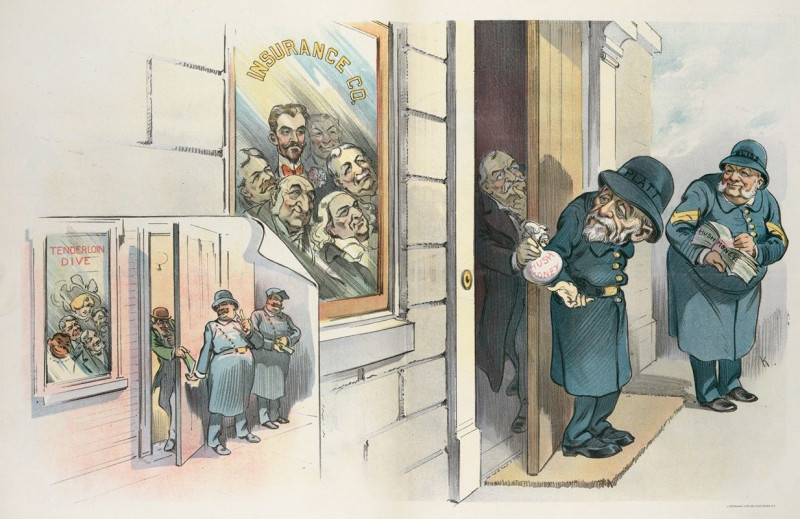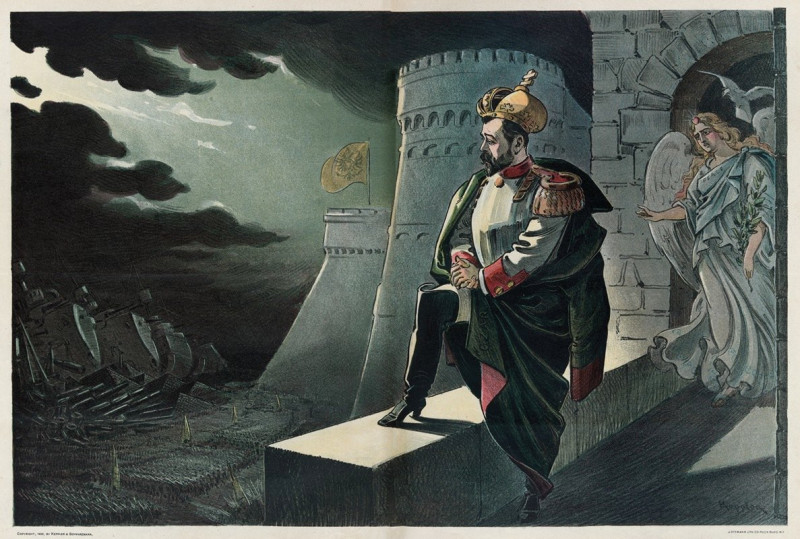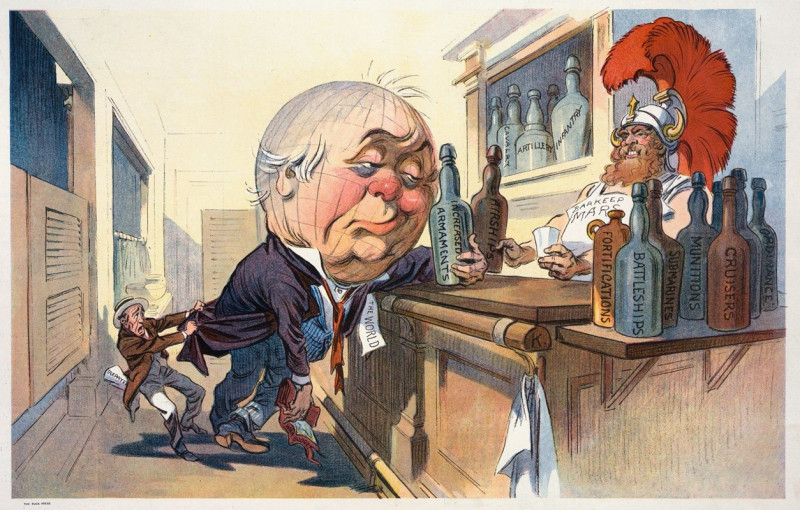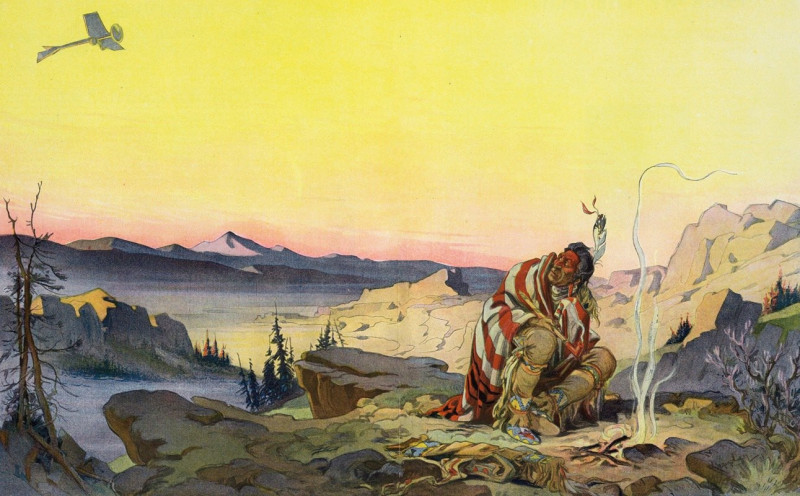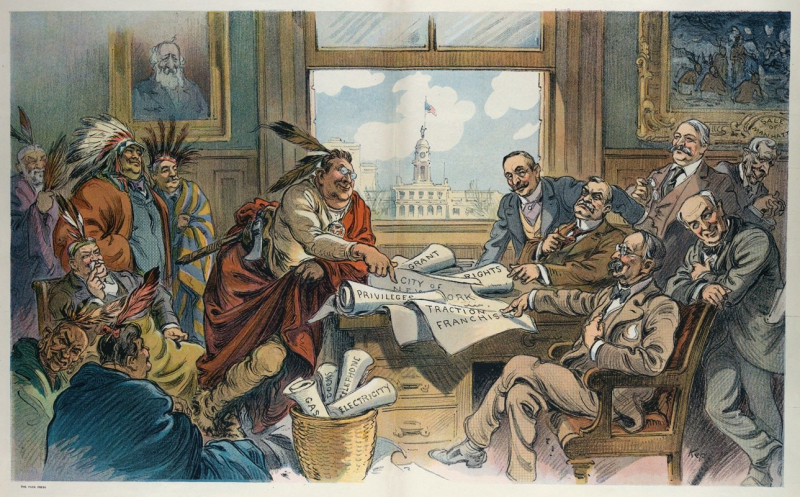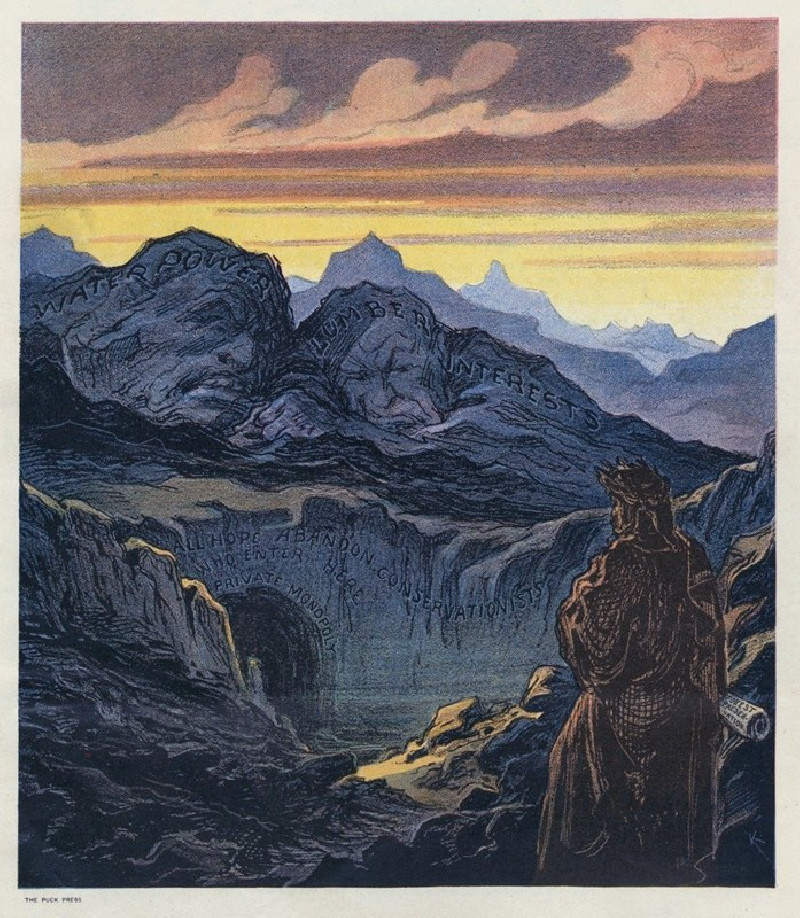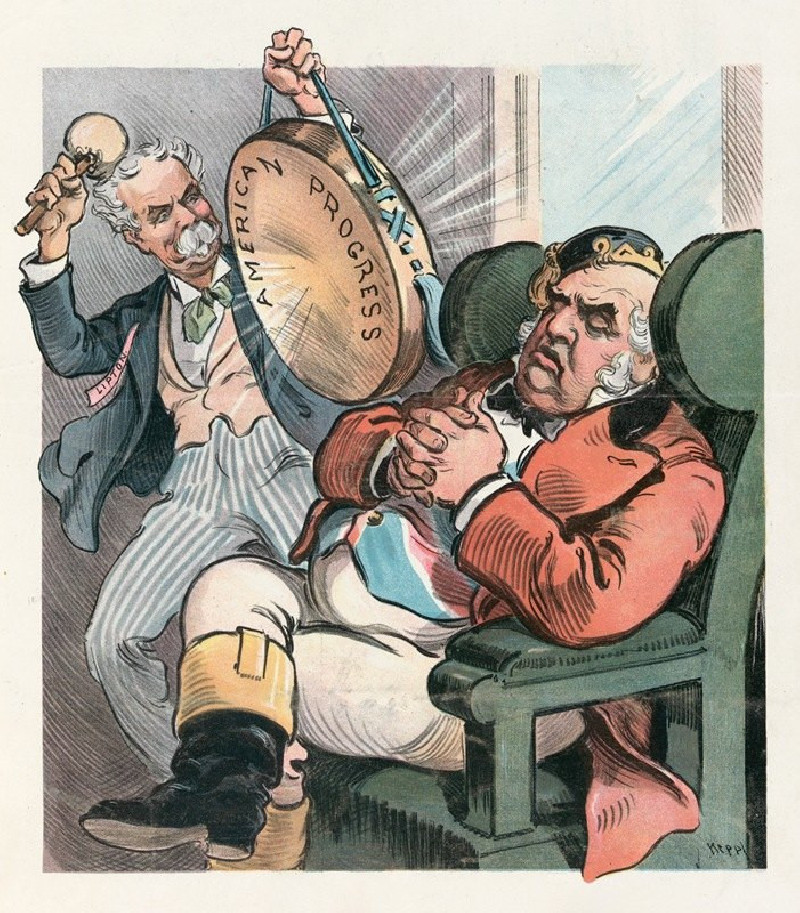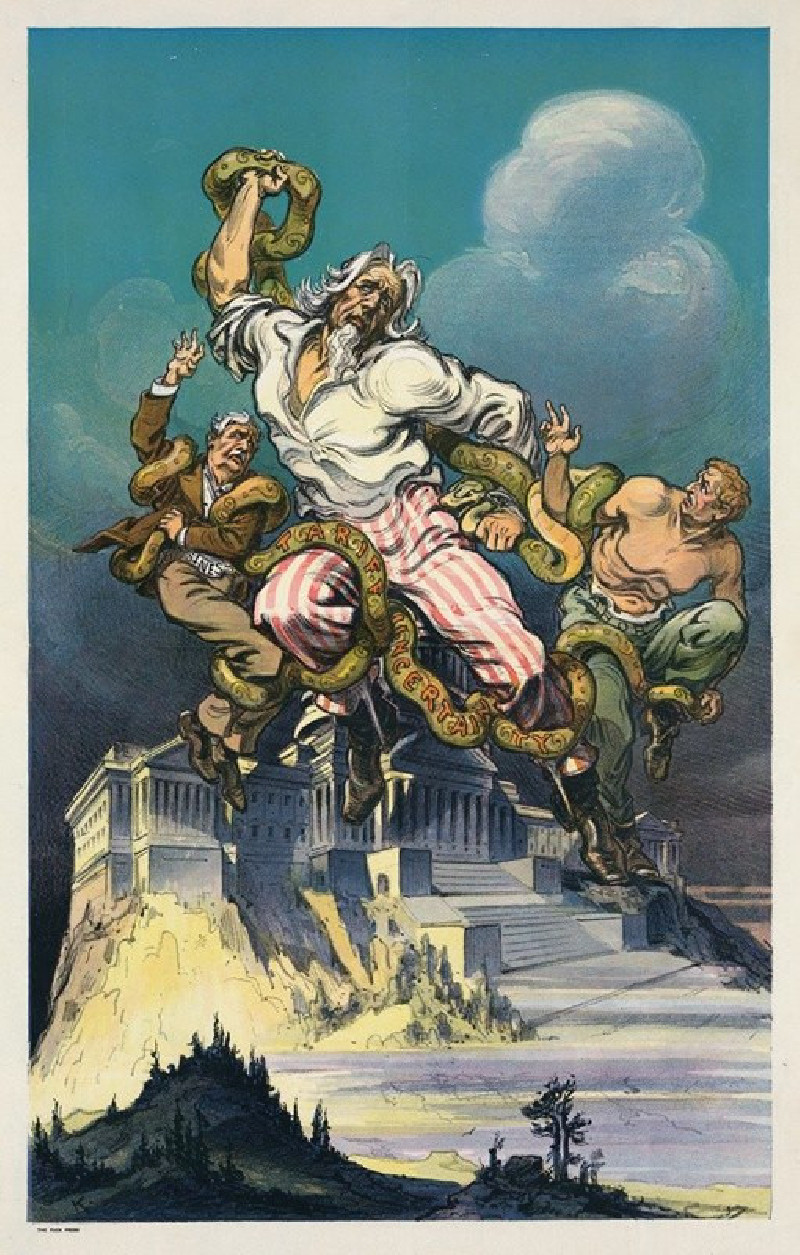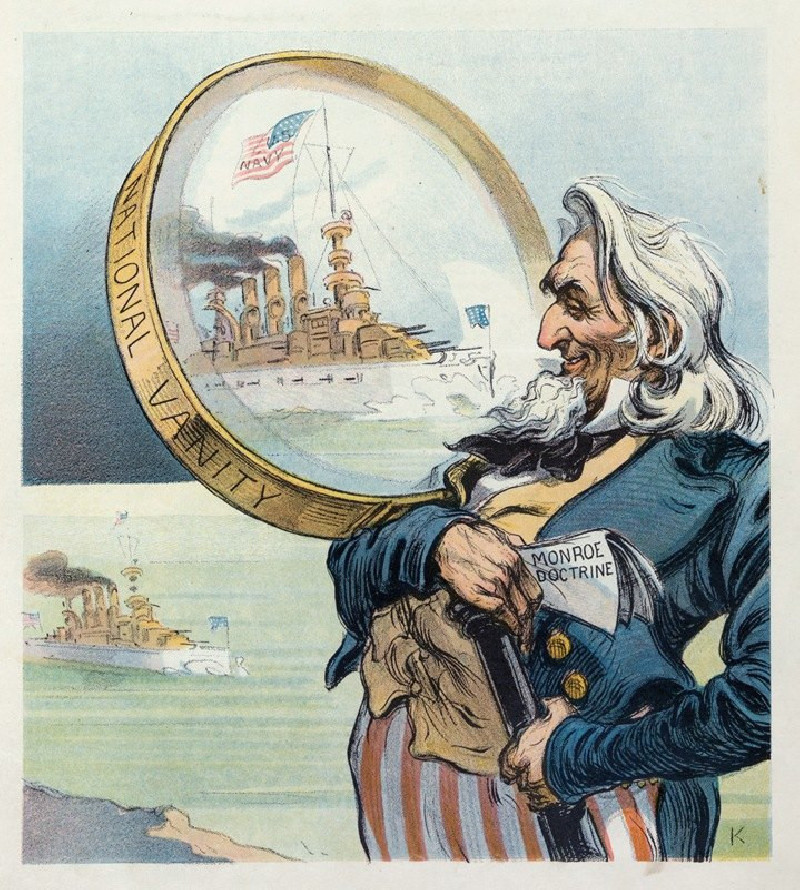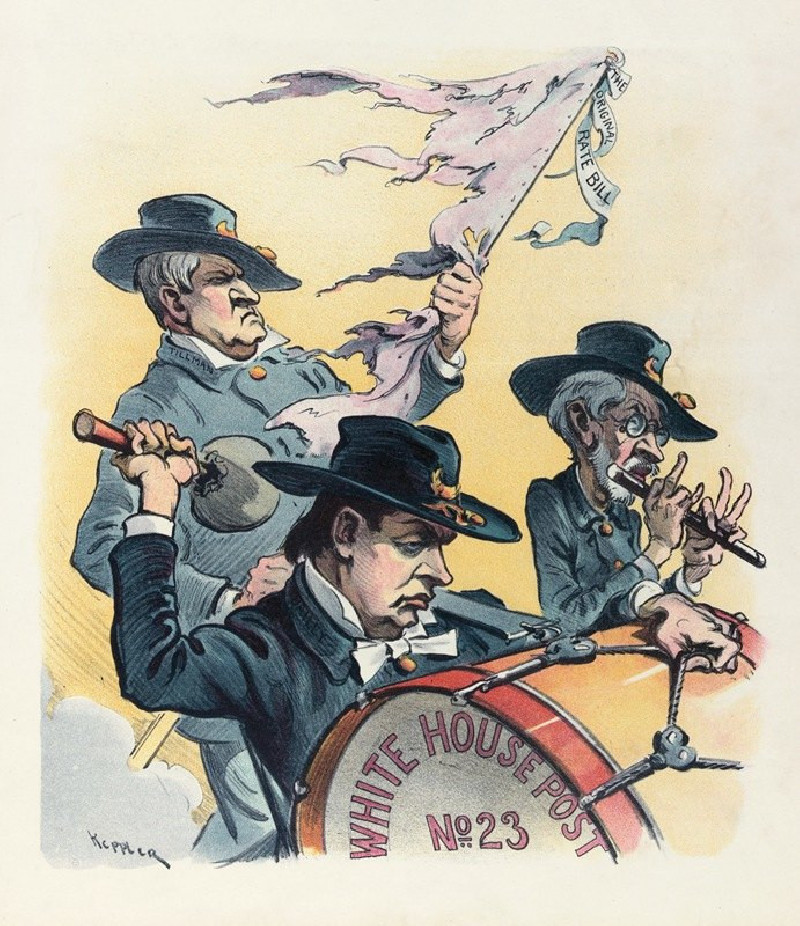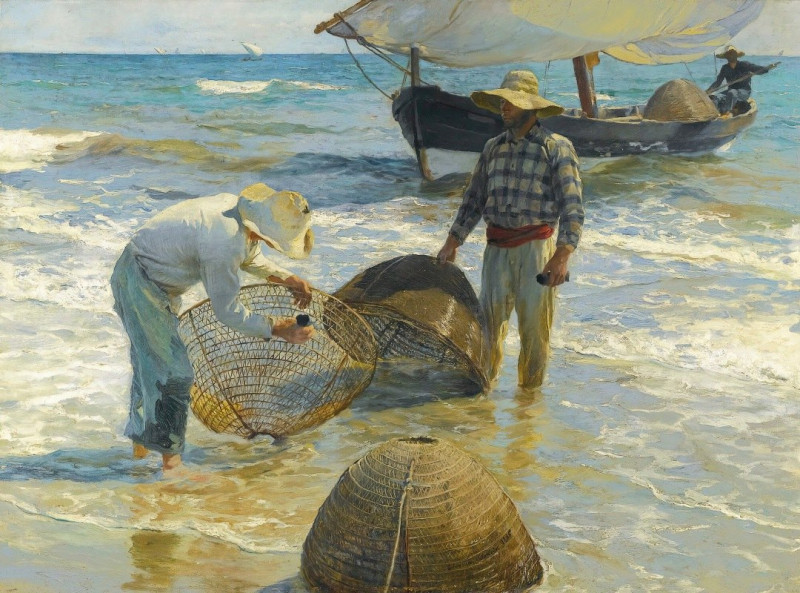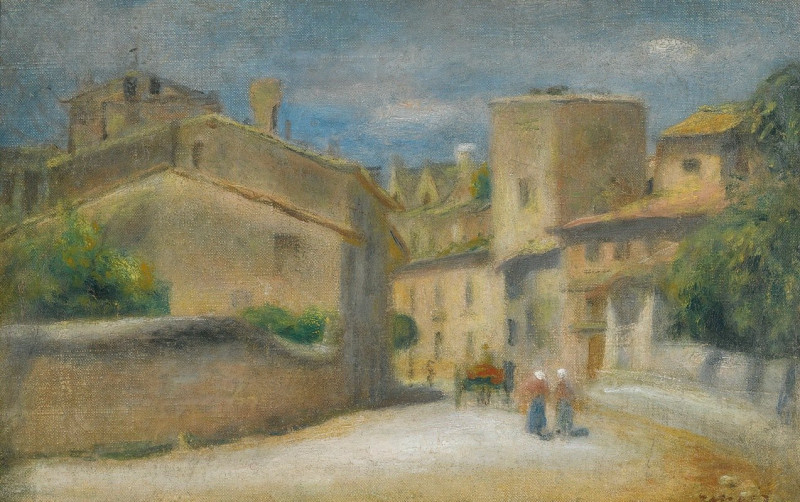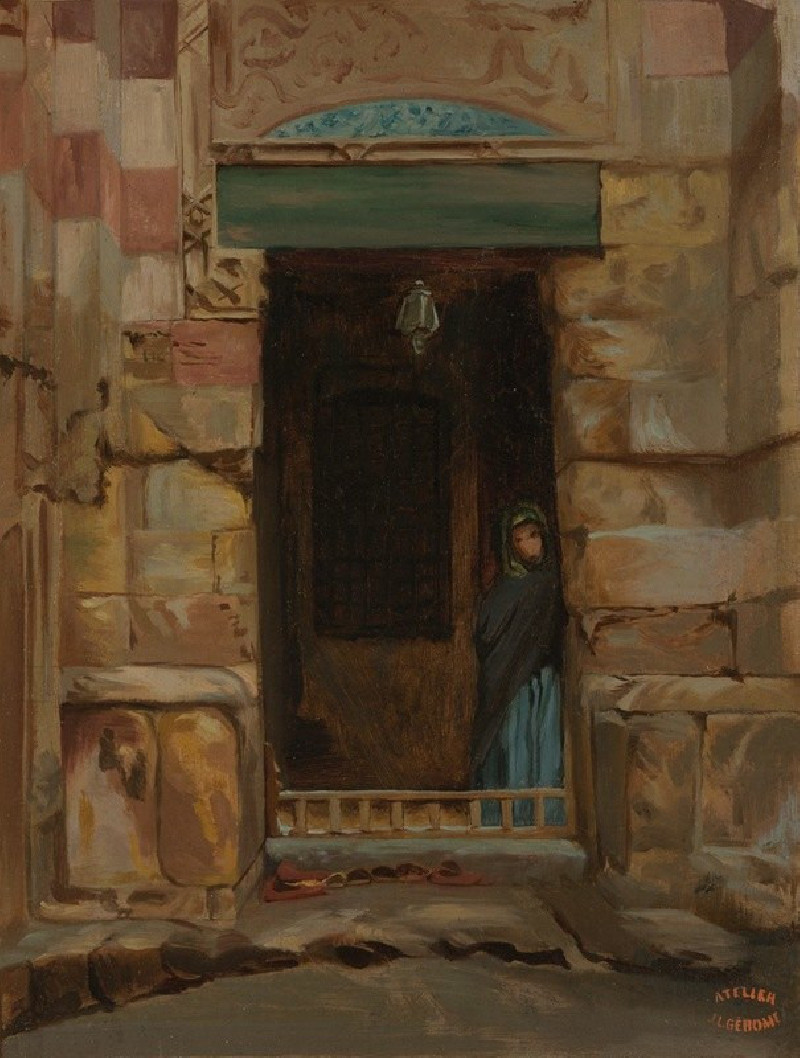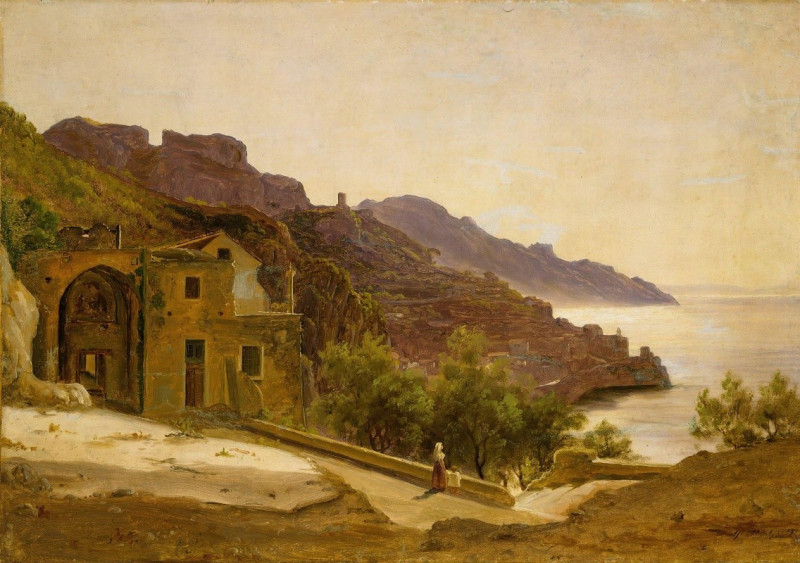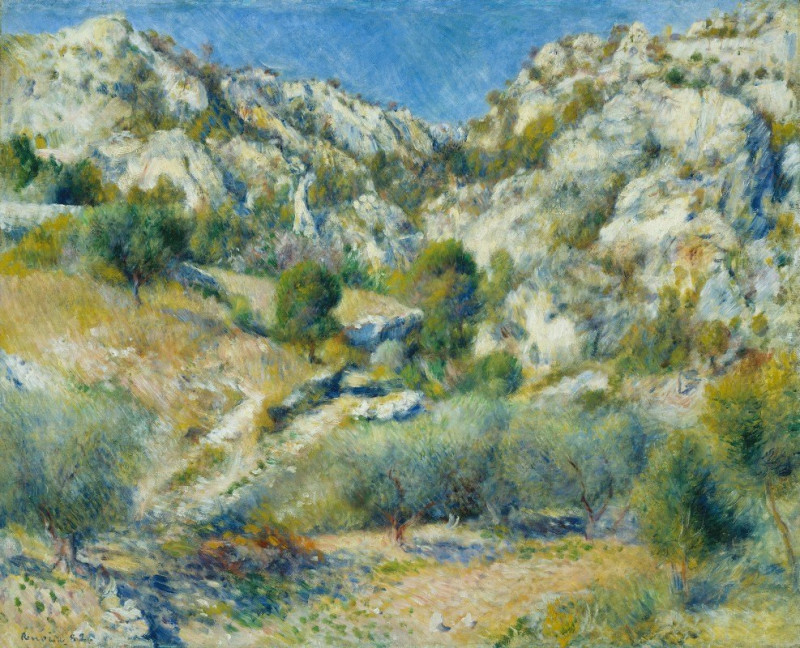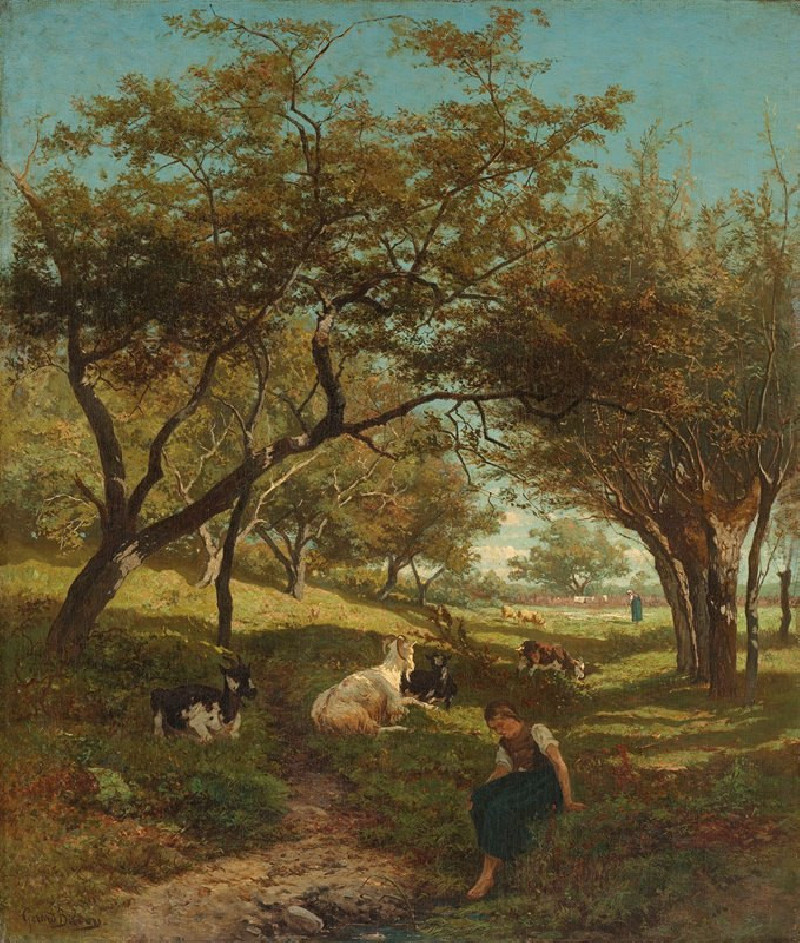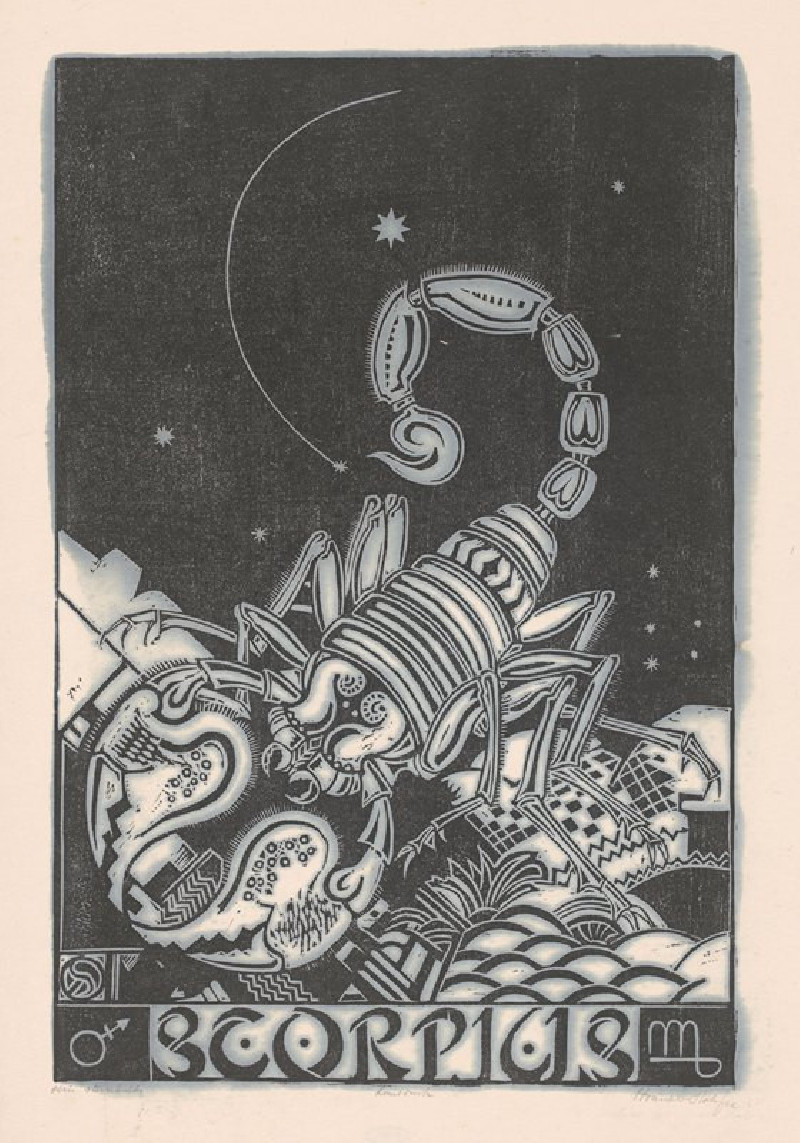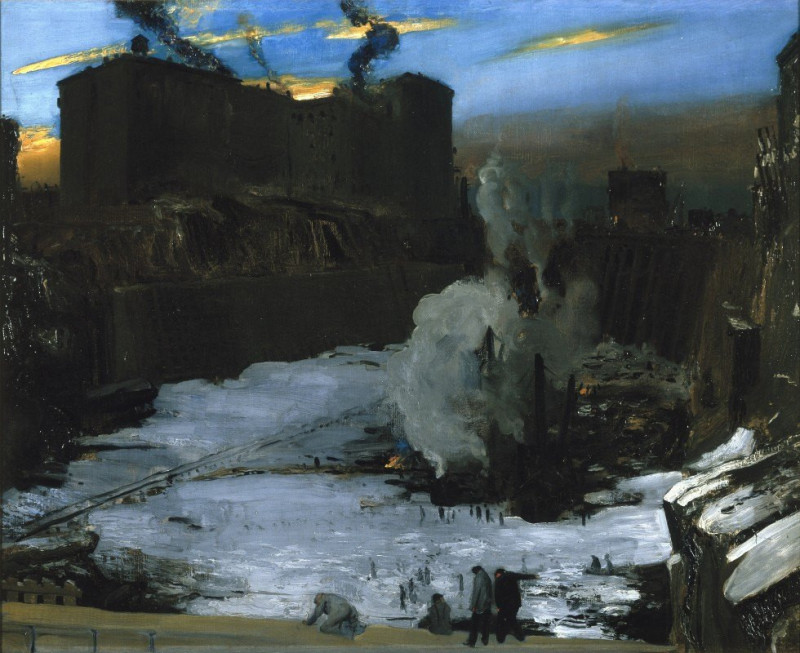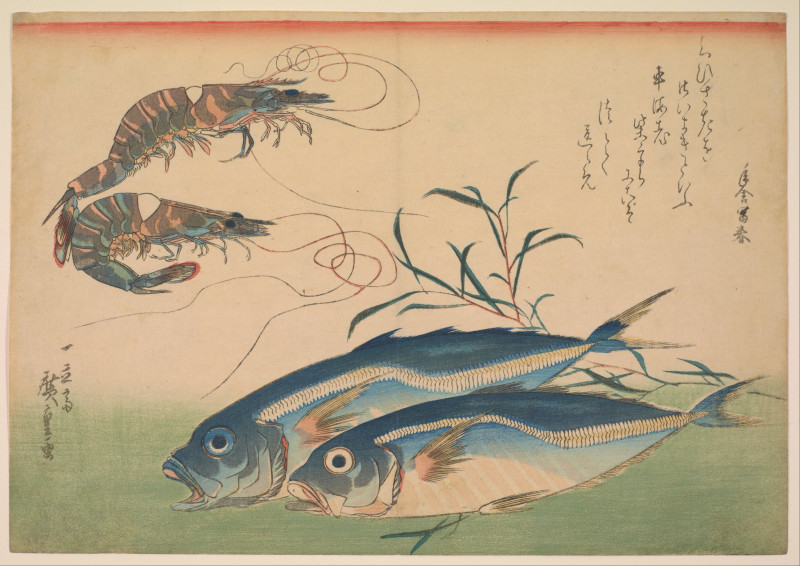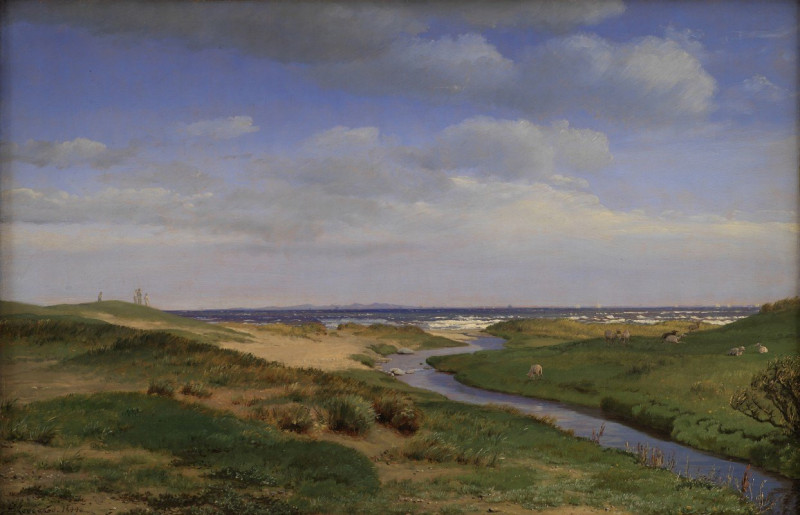The sword of standpatocles (1910)
Technique: Giclée quality print
Recommended by our customers
More about this artwork
Exploring a Unique Intersection of Economics and Satire: Udo Keppler's "The sword of standpatocles" (1910)Udo Keppler, an artist renowned for his pointed political commentary, brought a sharp critique to life in his 1910 painting "The sword of standpatocles." This piece merges the imagery of mythology with the issues of early 20th-century American economic politics.The painting showcases a robust and somewhat menacing bison, donned in a suit that hints at corporate attire, suggesting its role as a symbol of large trusts and monopolistic powers. The bison holds a spoon, greedily scooping up an enormous pile of gold coins labeled "Extra Profits." This act alludes to the unchecked corporate greed prevalent during that era.Hovering above the bison is a large sword, suspended by a slender chain. The sword is labeled "Removal of duties on meat," pointing directly to contemporary debates over tariff reforms and the economic policies affecting the meat industry. The image of the sword, akin to the Sword of Damocles, symbolizes the constant threat or danger that such economic policies pose to public welfare, hanging precariously over the proceedings below."The sword of standpatocles" employs vivid and engaging visuals to critique economic policies and their ramifications. As with much of Keppler’s work, this painting is a blend of sharp critique and engaging imagery, offering a window into the economic and political debates of early 20th-century America.
Delivery
Returns
Udo J. Keppler, since 1894. known as Joseph Keppler, Jr., was an American political cartoonist, publisher, and Native American advocate. The son of cartoonist Joseph Keppler (1838–1894), who founded Puck magazine, the younger Keppler also contributed to cartoons, and after his father's death became co-owner of the magazine under the name Joseph Keppler. He was also a collector of Native American artifacts.

